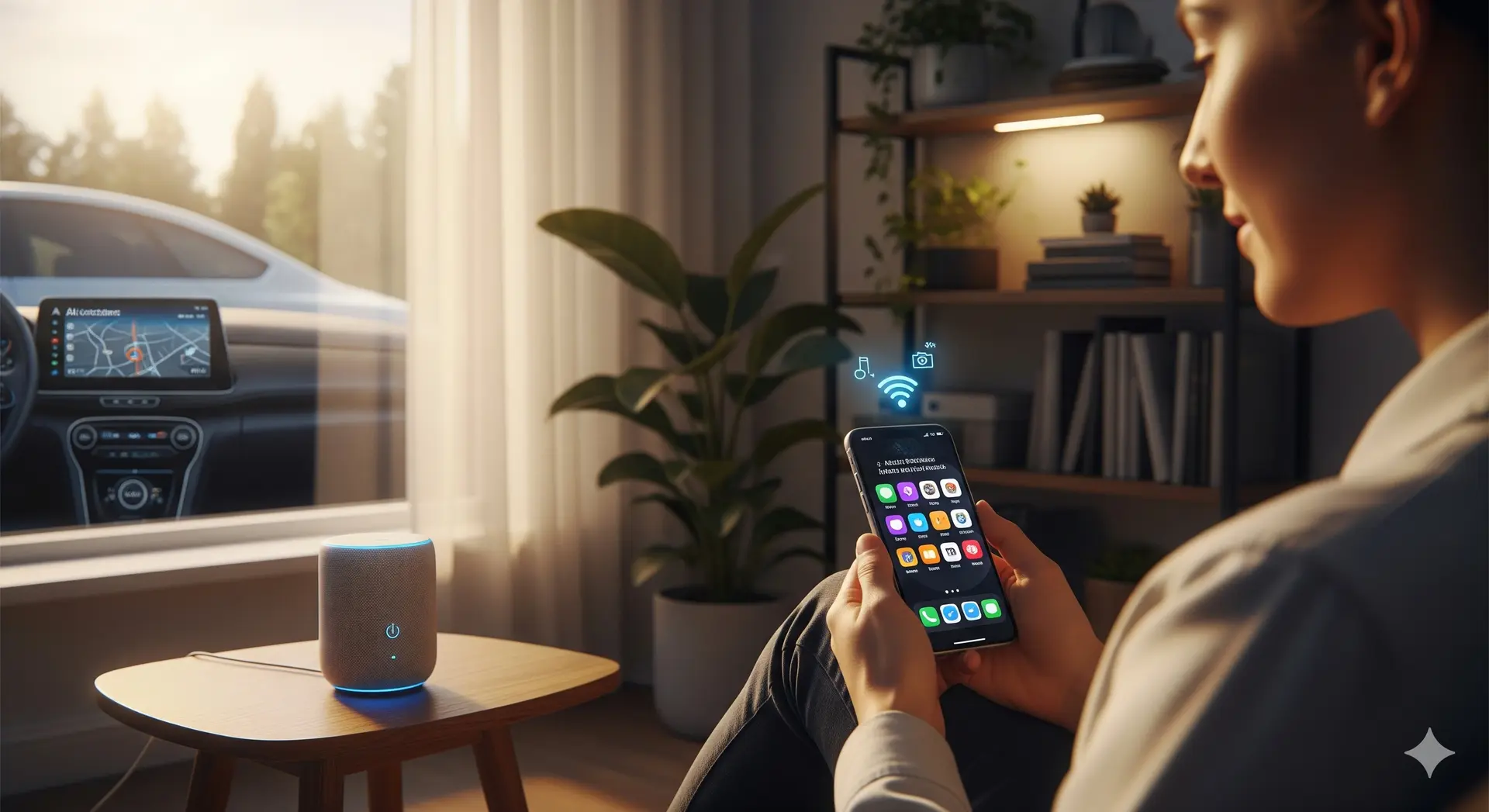Picture this: You wake up, ask Alexa about the weather, check your phone’s AI-powered news recommendations, use Google Maps to avoid traffic, and pay for coffee with face recognition. Before 9 AM, you’ve already interacted with artificial intelligence at least four times.
But here’s the million-dollar question: Is all this AI interaction actually safe?
If you’re like most people, you probably use AI daily without thinking twice about it. Yet recent headlines about data breaches and AI mishaps might have you wondering if you should be more careful.
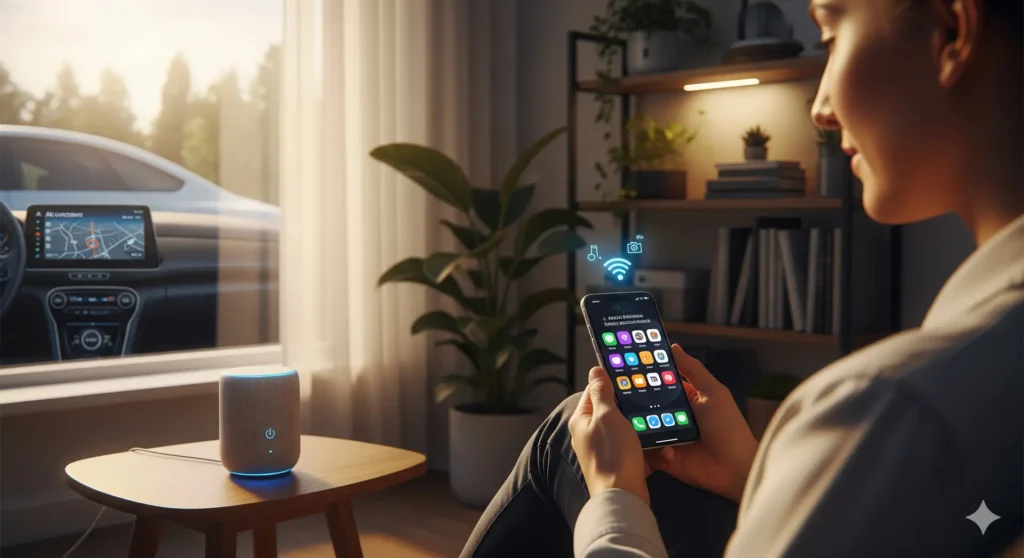
TL;DR
Here’s what you need to know about artificial intelligence safety everyday tasks:
• Most consumer AI is generally safe when used properly, but risks do exist
• Your personal data faces the biggest threats from AI privacy risks personal data collection
• Smart home devices and voice assistants have specific security vulnerabilities you should know about
• Simple precautions can dramatically reduce your risk while keeping AI’s benefits
AI Safety: Quick Summary
AI is generally safe for everyday tasks like reminders, navigation, and translations. The biggest risks are privacy leaks, bias, and smart device security issues. On-device AI offers safer options than cloud-based systems. You can reduce risks by updating software, using strong passwords, and checking privacy settings.
The Problem: AI Is Everywhere, But Are We Safe?
Let’s be honest. AI has snuck into our lives faster than we could learn about it.
Your smartphone suggests replies to texts. Netflix knows what you want to watch. Your car’s navigation system learns your daily routes. Smart thermostats adjust temperatures based on your habits.
But here’s what’s keeping security experts awake at night: Most people have no idea how much personal information they’re sharing with AI systems.
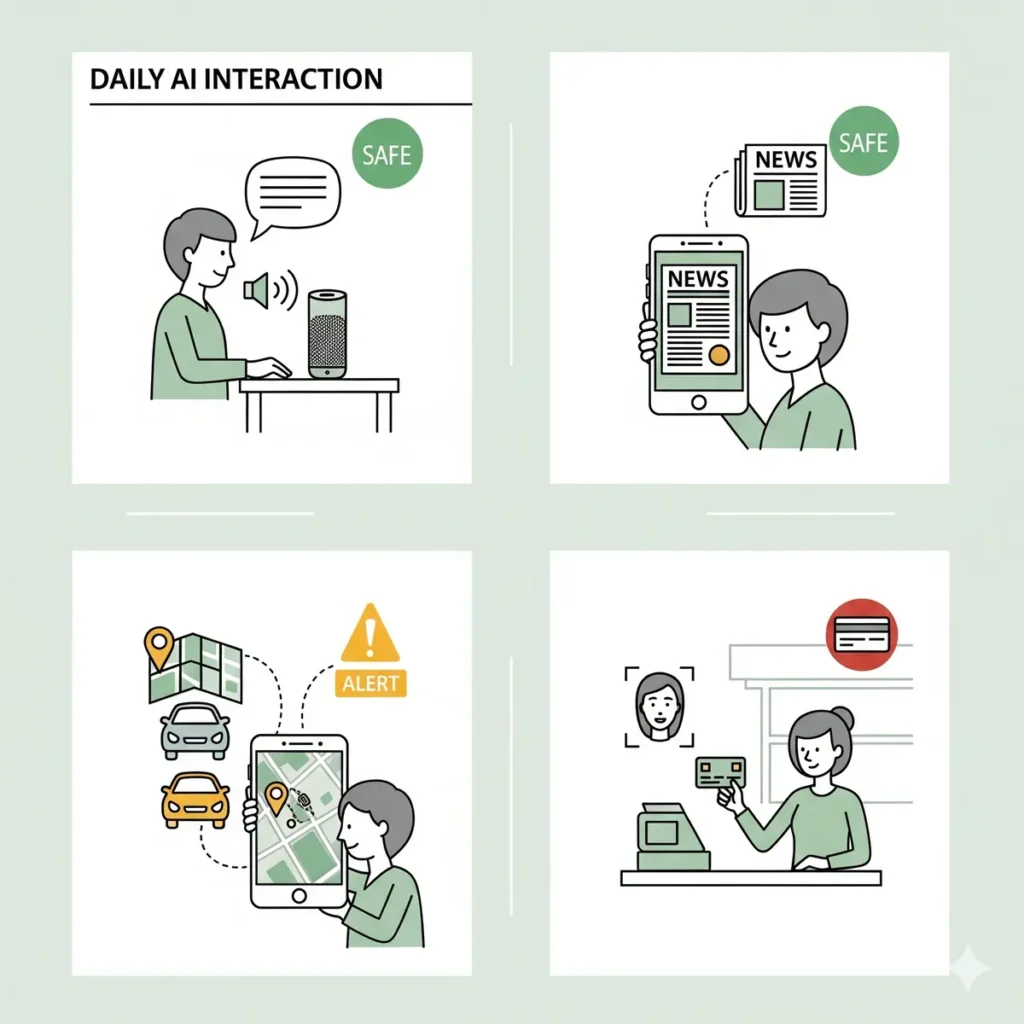
Think about it: Your voice assistant hears everything you say at home. Your smartphone’s AI knows where you go, what you search for, and who you talk to. Your smart TV might be watching you watch TV.
According to IBM’s AI safety research, the rapid adoption of AI in everyday life has outpaced our understanding of the risks. We’re essentially running a massive experiment with our privacy and security as the stakes.
The Solution: Smart AI Usage with Simple Safeguards
The good news? You don’t need to become a tech expert or give up AI completely. You just need to understand the real risks and take simple steps to protect yourself.
Let’s break down the main areas where you encounter AI and how to stay safe in each one.
Voice Assistants: Convenience vs. Privacy
The Appeal: Voice assistants like Alexa, Google Assistant, and Siri make life easier. Ask for weather, set timers, control smart devices, or get quick answers.
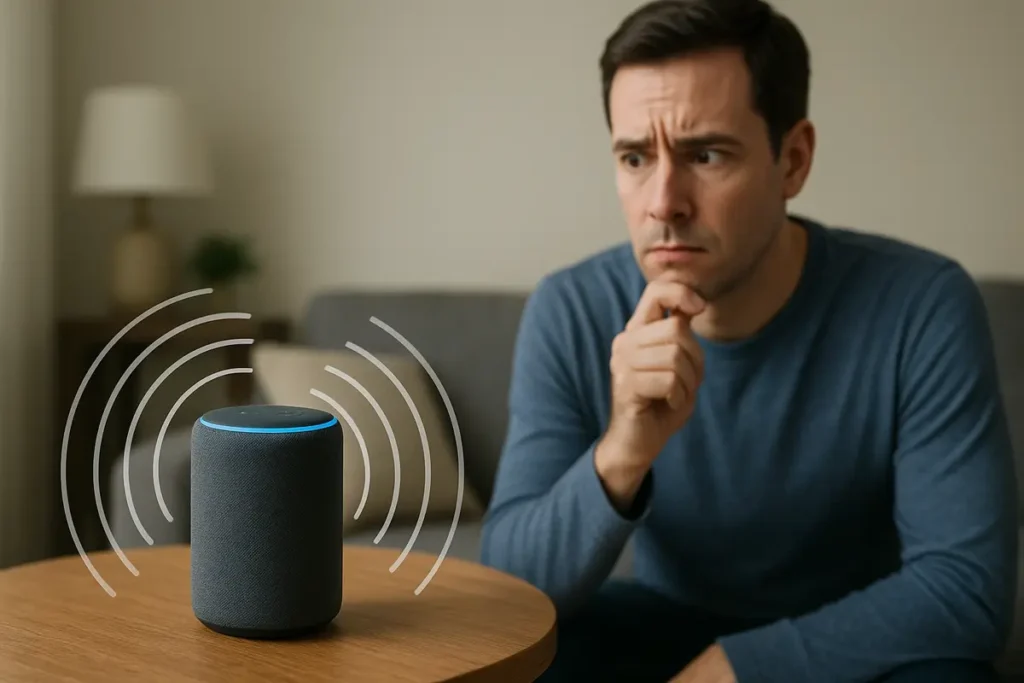
The Reality: These devices are always listening for their wake words. Voice assistant security vulnerabilities include accidental recordings, data breaches, and potential eavesdropping.
Smart Protection Steps:
- Review and delete your voice recordings regularly
- Turn off always-listening mode when having private conversations
- Place voice assistants away from bedrooms and sensitive areas
- Use physical mute buttons during confidential calls
Research shows that most voice AI eavesdropping risks come from poor user habits, not malicious attacks.
Smart Home AI: Balancing Automation and Security
Your smart home learns your routines, adjusts lighting, manages energy use, and even orders groceries when you’re running low.
The Benefits: AI in smart homes can reduce energy costs by up to 23% and improve home security through pattern recognition.
The Risks: Smart home AI safety concerns include:
- Hackers accessing your home network through vulnerable devices
- AI systems making wrong assumptions about your needs
- Personal routine data being sold to third parties
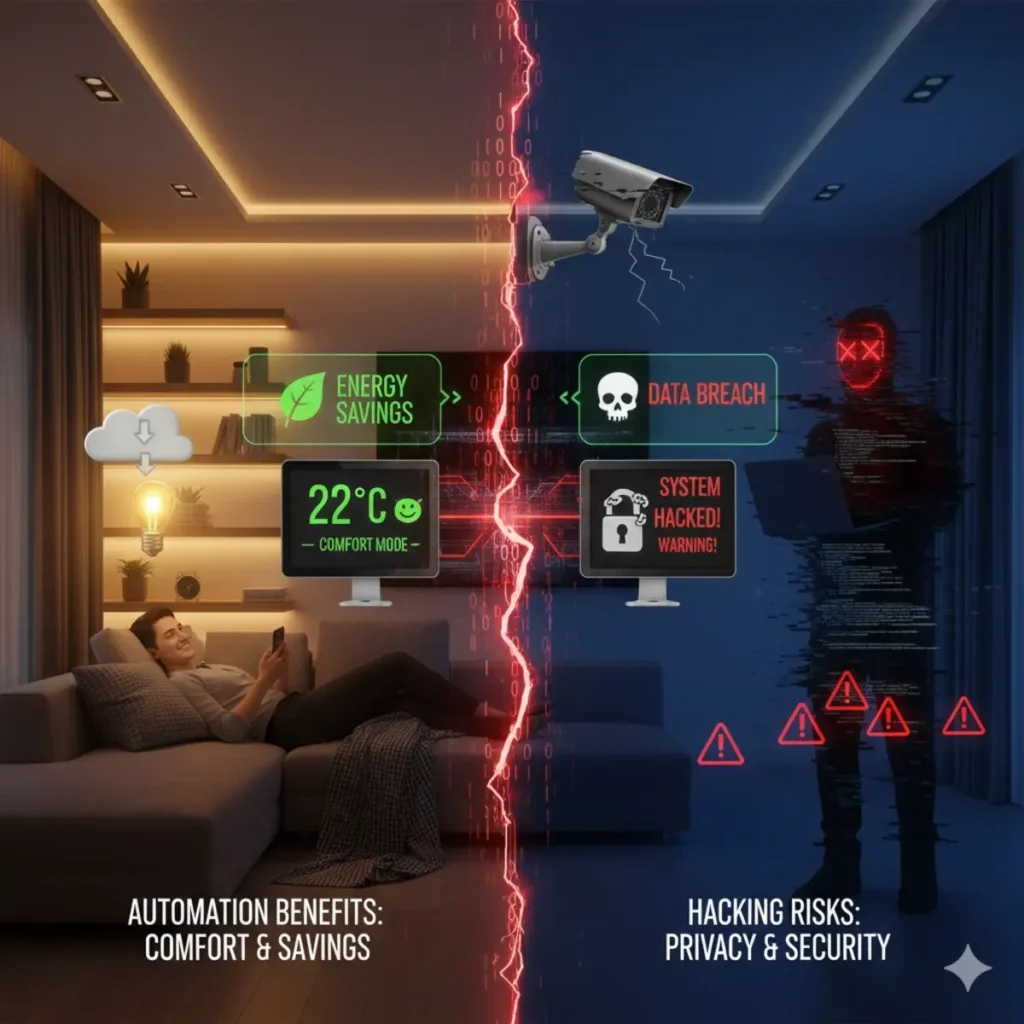
Your Defense Strategy:
- Change default passwords on all smart devices
- Set up a separate network for smart home devices
- Regularly update device firmware
- Review what data each device collects
Smartphone AI: Your Pocket Privacy Challenge
Modern smartphones use AI for everything from photo organization to predictive text. Your phone’s AI knows more about you than your closest friends do.
The Hidden Risks: Smartphone AI data privacy threats include location tracking, contact scanning, and behavioral profiling that could be used for targeted advertising or worse.
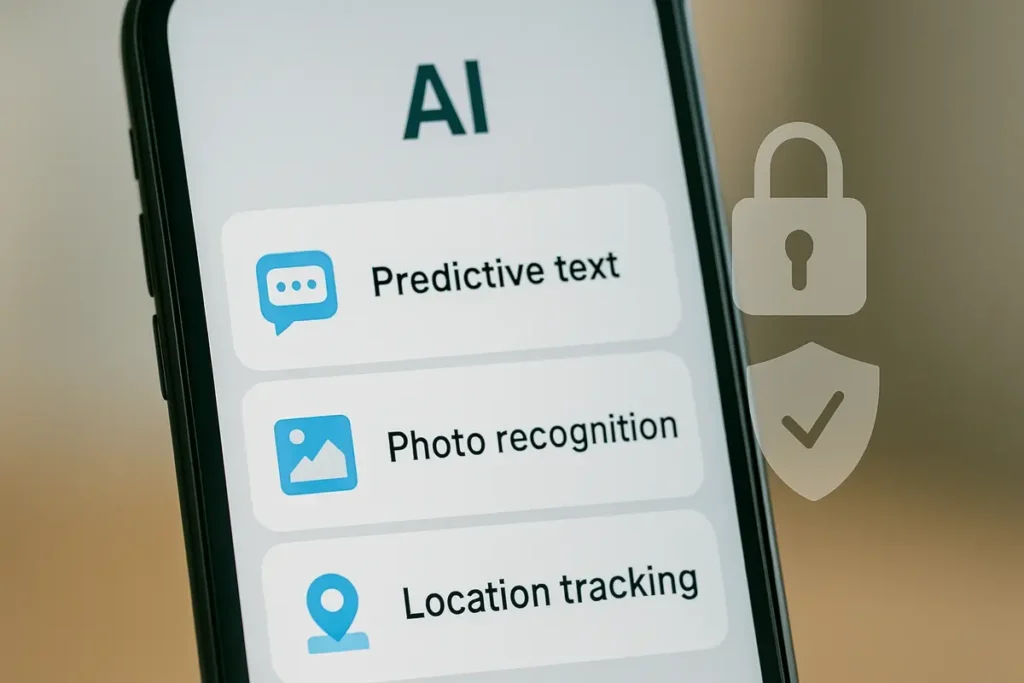
The Protection Plan:
- Review app permissions monthly
- Turn off AI features you don’t actually use
- Use on-device AI processing when available
- Consider on-device AI privacy protection options
Apple’s and Google’s focus on processing more AI tasks directly on your device, rather than in the cloud, significantly reduces privacy risks.
AI at Work: Productivity vs. Professional Security
The Opportunity: AI workplace safety benefits include accident prediction, automated safety monitoring, and instant risk alerts that can prevent injuries.
The Challenge: Using AI tools at work raises questions about confidential information, client data, and intellectual property protection.
Best Practices for Professional AI Use:
- Never input confidential client information into public AI tools
- Use company-approved AI platforms when possible
- Understand your employer’s AI usage policies
- Keep sensitive business discussions away from AI-powered devices
The Dark Side: Real AI Risks You Should Know
Let’s address the elephant in the room. AI isn’t perfect, and some risks are serious.
AI Bias in Everyday Applications: AI systems can make unfair decisions about job applications, loan approvals, or medical diagnoses based on biased training data. Studies show that AI bias affects everything from criminal justice to healthcare.
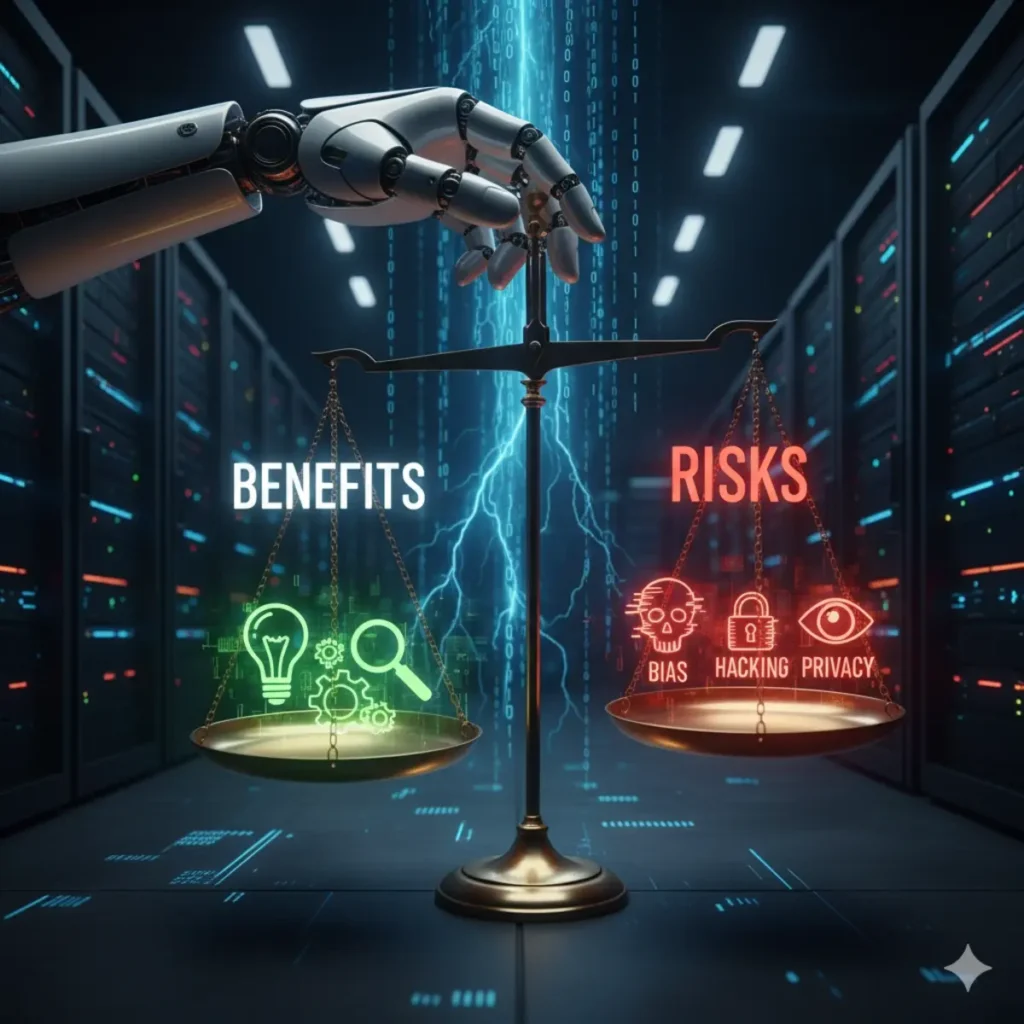
Machine Learning Security Threats: Hackers can “poison” AI systems by feeding them bad data, causing them to make wrong decisions. This could affect everything from your car’s autopilot to your bank’s fraud detection.
Behavioral Risks: AI behavioral risks mental health concerns are emerging as people become overly dependent on AI for decision-making, potentially reducing critical thinking skills.
A Real User’s Story: Sarah’s AI Wake-Up Call
Sarah, a marketing manager from Portland, discovered she had a problem when her smart home system started acting weird.
Her lights turned on at odd hours. Her thermostat kept changing settings. Her smart speaker began playing music she never requested.
After some investigation, Sarah realized she’d never changed the default passwords on her smart devices. A neighbor’s teenager had accessed her network as a prank.
“It was a wake-up call,” Sarah told me. “I realized I’d brought all this AI into my home without thinking about security. Now I treat my smart devices like I treat my front door – with proper locks and regular maintenance.”

Sarah’s experience taught her that AI safety isn’t about the technology being dangerous – it’s about using it responsibly.
The Future: Safer AI Through Better Design
The good news keeps coming. AI companies are getting better at building safety into their systems.
On-Device Processing: More AI tasks are happening directly on your devices rather than in the cloud, keeping your data more private.
AI Fraud Detection Benefits: Banks and credit card companies use AI to spot suspicious activity faster than ever before, protecting your money.
Transparent AI: New regulations require companies to explain how their AI systems make decisions, giving you more control.
Government safety initiatives are pushing for better AI standards and consumer protections.
Key Takeaways: Your AI Safety Checklist
Privacy Protection:
- Review AI app permissions monthly
- Delete unnecessary voice recordings and search history
- Use strong, unique passwords for AI-enabled devices
- Choose on-device processing when available
Smart Usage:
- Understand what data each AI system collects
- Don’t input sensitive information into public AI tools
- Keep AI devices away from private spaces when possible
- Stay informed about AI data protection measures
Risk Awareness:
- Recognize that AI can make mistakes or show bias
- Don’t rely solely on AI for important decisions
- Monitor your consumer AI privacy rights
- Report unusual AI behavior promptly
Security Habits:
- Update AI-enabled devices regularly
- Use separate networks for smart home devices
- Turn off AI features you don’t actually need
- Backup important data outside of AI systems
Balance Benefits and Risks:
- Enjoy AI’s convenience while staying cautious
- Learn about new AI tools before using them
- Trust but verify AI recommendations
- Maintain human oversight of AI decisions
- Stay informed about global AI safety standards and regulations
Conclusion
Your AI-Powered future starts with smart choices today.
Artificial intelligence isn’t going anywhere. If anything, it’s becoming more integrated into daily life every month.
The question isn’t whether AI is completely safe – no technology is. The real question is whether you’re using AI in a way that maximizes benefits while minimizing risks.
Most AI tools designed for everyday use are reasonably safe when used properly. The biggest dangers come from careless usage, not malicious AI.
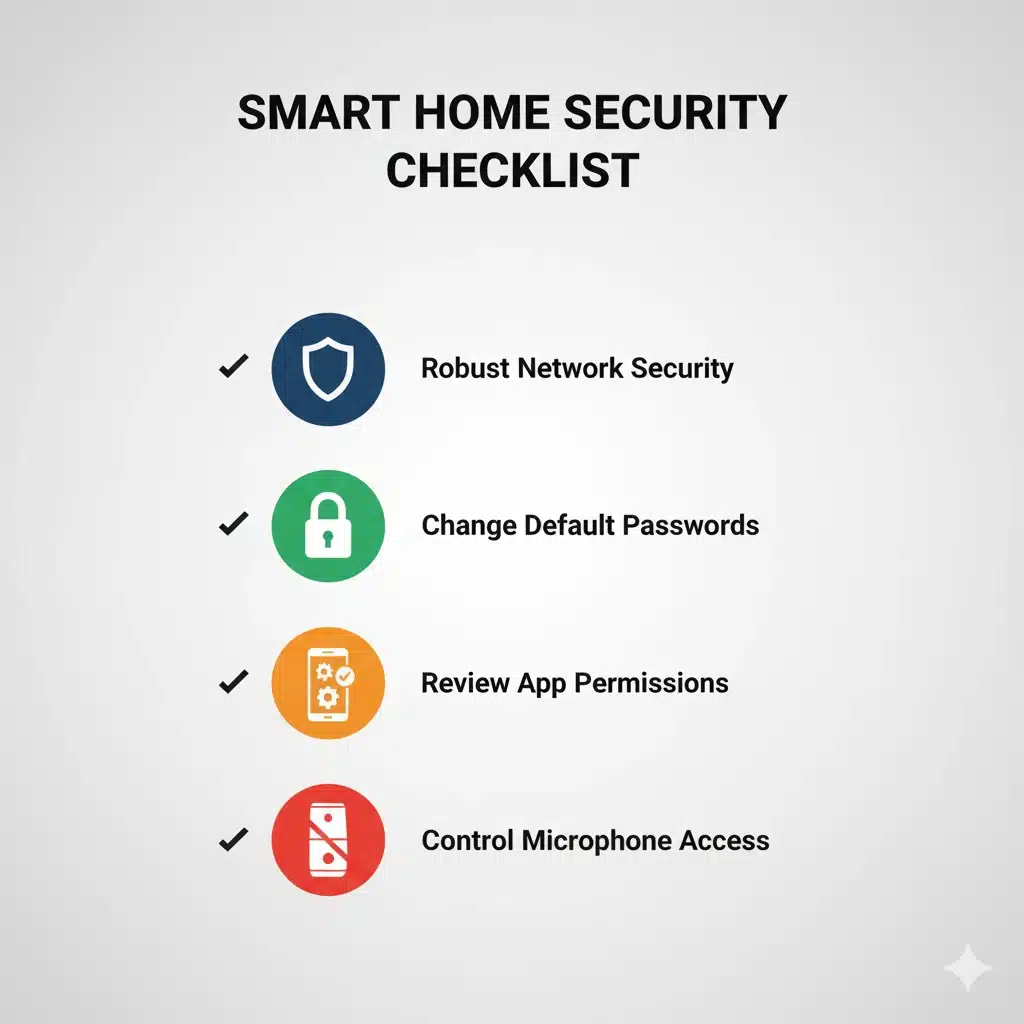
By taking simple precautions – updating passwords, reviewing permissions, and staying informed – you can enjoy AI’s benefits while protecting what matters most to you.
Your AI journey doesn’t have to be scary. It just needs to be smart.
FAQs:
Q1: Is artificial intelligence safe for daily use?
A1: Yes, if you manage privacy settings and updates. AI is safe for tasks like reminders, navigation, and translations.
Q2: What are the biggest AI safety concerns in daily life?
A2: The main risks are privacy leaks, voice assistant eavesdropping, and bias in decision-making.
Q3: Are smart home devices with AI safe?
A3: They can be, but you should update them often, use strong passwords, and disable unused features.
Q4: How can I protect my data when using AI on my smartphone?
A4: Choose apps with on-device AI, limit permissions, and review privacy settings regularly.
Q5: Can AI improve workplace safety?
A5: Yes. AI tools detect hazards, prevent fraud, and monitor worker health, reducing risks.
Disclaimer
This guide provides general information about artificial intelligence safety based on current expert recommendations and public sources as of 2025. Individual experiences and risks may vary depending on device type, settings, and usage habits. The information presented is not professional security advice; readers are encouraged to consult technology professionals or official data protection authorities for specific concerns regarding privacy, device security, or legal compliance.
